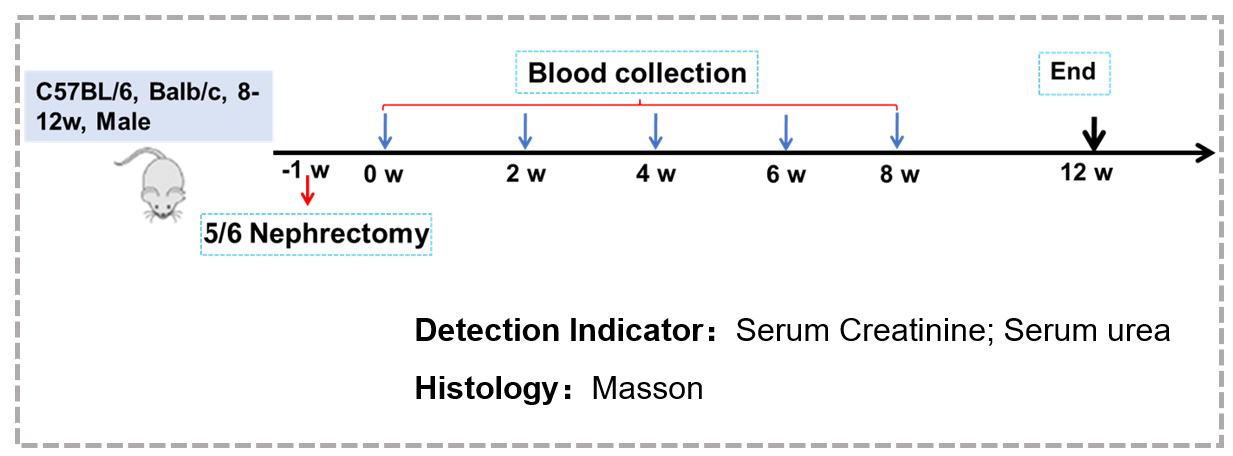English
Kidney disease model
Pharmacology services
Nephrectomy induced chronic kidney disease
5/6 nephrectomy produced high perfusion and filtration pressure to the remaining nephrons of mice. The residual nephrons were further destroyed, thus leading to chronic kidney disease characterized by sclerosis and hypertrophy of glomeruli.
Establishment of 5/6 nephrectomy-induced chronic kidney disease


Technical support
Quality Assurance
Copyright © 2024 BioMice. All Rights Reserved
Powered by Fractal-technology






 +86-10-56967680
+86-10-56967680 info@bbctg.com.cn
info@bbctg.com.cn